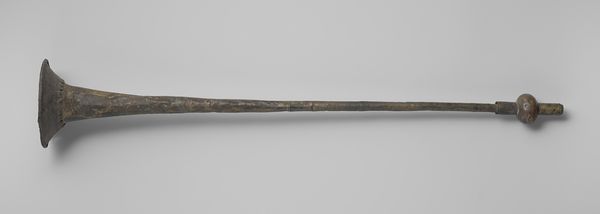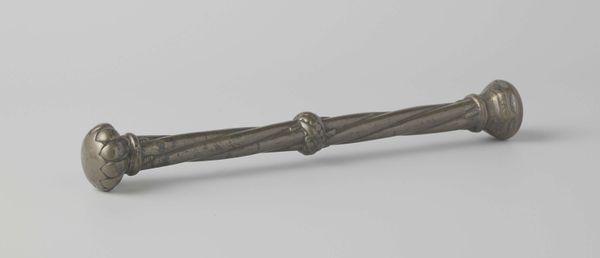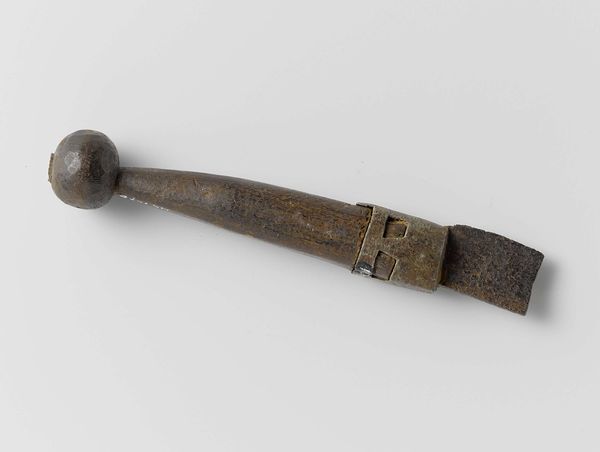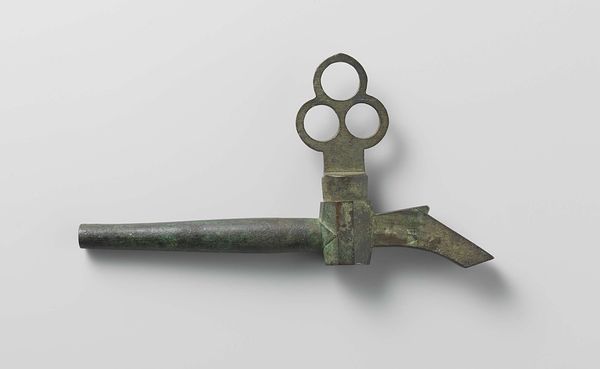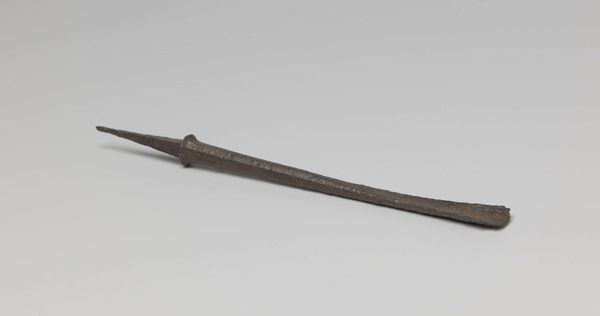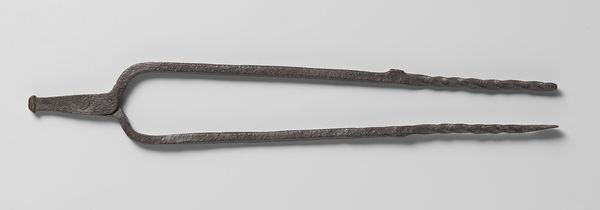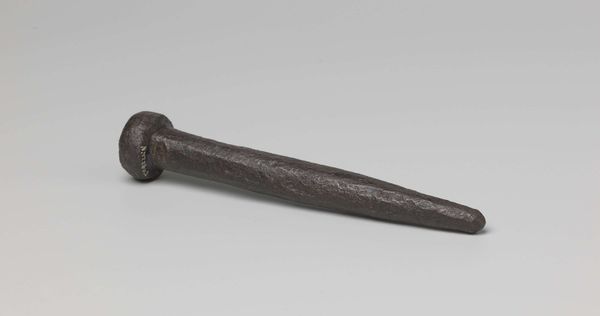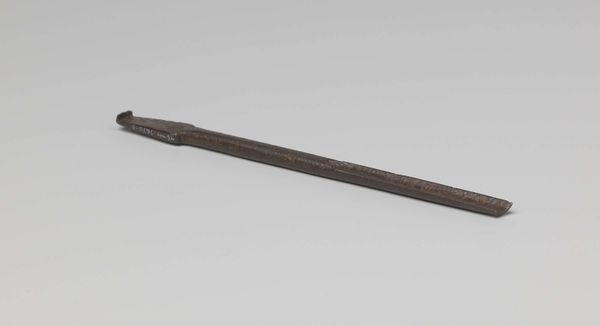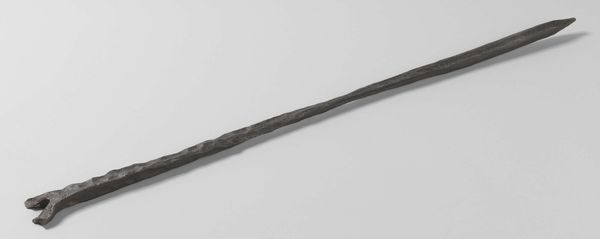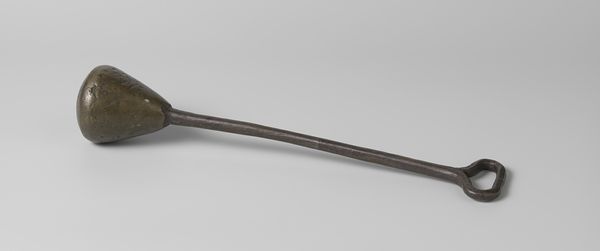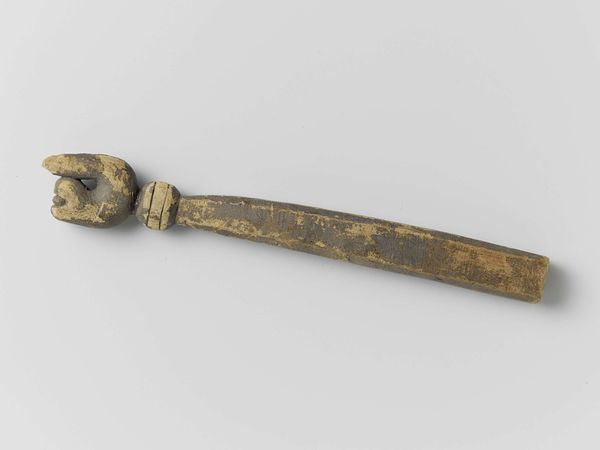
Part of a natural trumpet from the wreck of the Dutch East India ship Hollandia, made by Georg Friedrich Steinmetz 1700 - 1735
0:00
0:00
brass, metal, sculpture
#
brass
#
baroque
#
metal
#
sculpture
#
sculpture
Dimensions: height 14.5 cm, width 4.5 cm, depth 3 cm, height 0.5 cm, diameter 1 cm
Copyright: Rijks Museum: Open Domain
Curator: Here we have part of a natural trumpet, recovered from the wreck of the Dutch East India ship Hollandia. It was crafted sometime between 1700 and 1735 by Georg Friedrich Steinmetz. Editor: The metalwork appears crude and imperfect, yet it speaks to me of grand ceremonies, perhaps even declarations of war. It looks deceptively like a found-object sculpture from the late 20th century. Curator: Its discovery on the Hollandia connects it directly to global trade and maritime power. Imagine the music this trumpet made, signaling the arrival of a ship laden with goods. That simple trumpet reflects so much of the early globalized world. Editor: The patination alone tells a fascinating tale! I see the rough texture, and what seem like impurities within the aged brass. And the bent valve suggests use, damage, and perhaps the chaos of the shipwreck that swallowed the Hollandia. Curator: Baroque music was deeply intertwined with the power structures of the time, regularly used in state events. So a trumpet such as this might have served as both musical instrument and emblem of imperial strength and national ambition. Editor: Indeed. Think of the musical intervals it could produce, constrained as it was. The natural trumpet enforces particular melodic limitations. It is a study of restraint and suggestion. Curator: Its materiality interests me particularly. Consider the role that metalworking played in statecraft: acquiring and utilizing materials like brass signaled resources, craft specialization, and trade networks. It embodies early modern globalization. Editor: Yes, it's an artifact deeply embedded in trade history, no doubt. Yet as an object, it’s an amazing synthesis of simple lines and compelling materiality. There's almost something elegant in its rudimentary construction. Curator: Seeing how a relatively modest artifact illuminates broader societal themes fascinates me. It reveals the layers of meaning an object from a shipwreck carries. Editor: And for me, it comes back to how this damaged piece nonetheless retains its communicative force, almost transcending its immediate function as a musical implement. Its abstract qualities allow me to connect with it immediately.
Comments
No comments
Be the first to comment and join the conversation on the ultimate creative platform.
